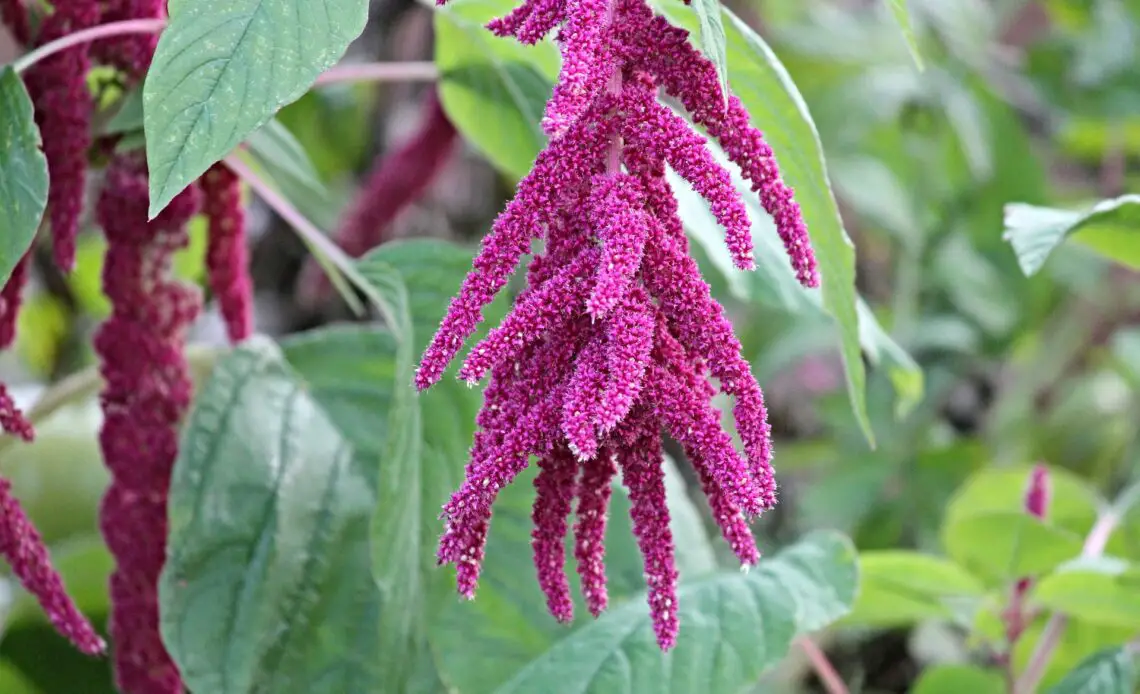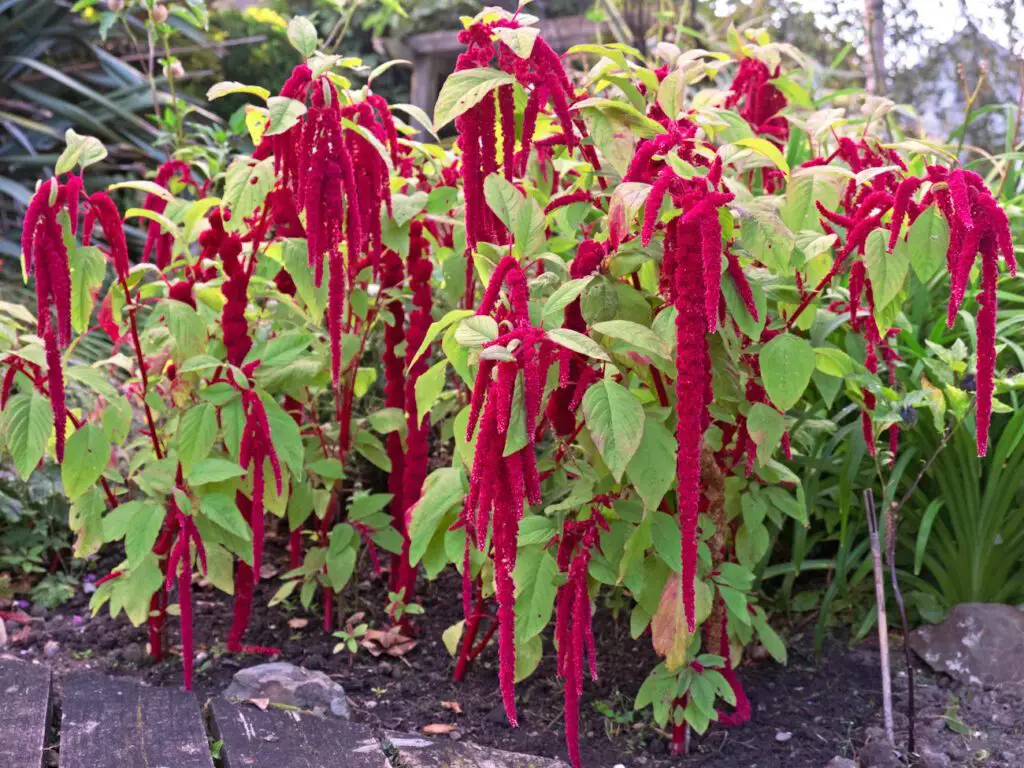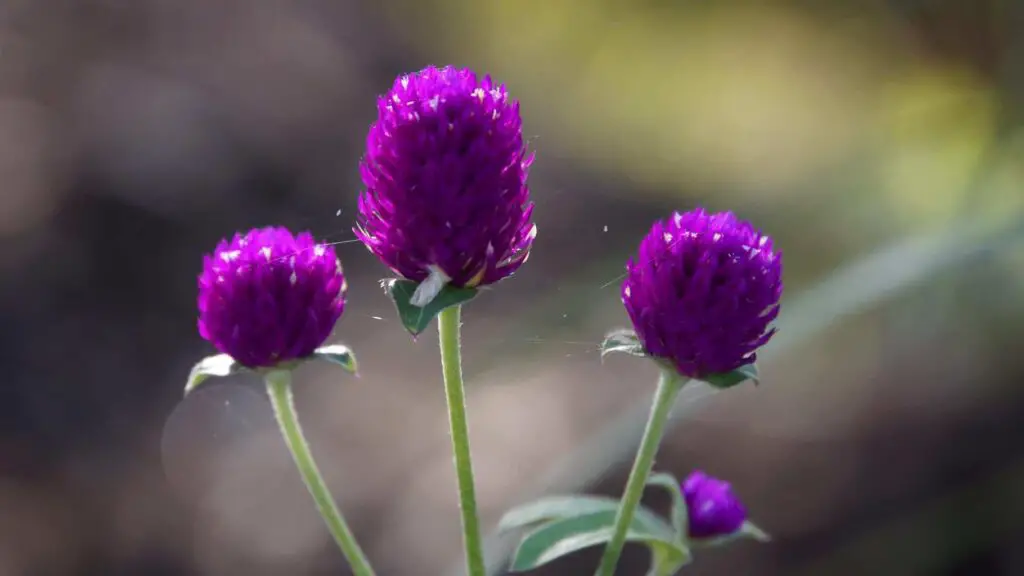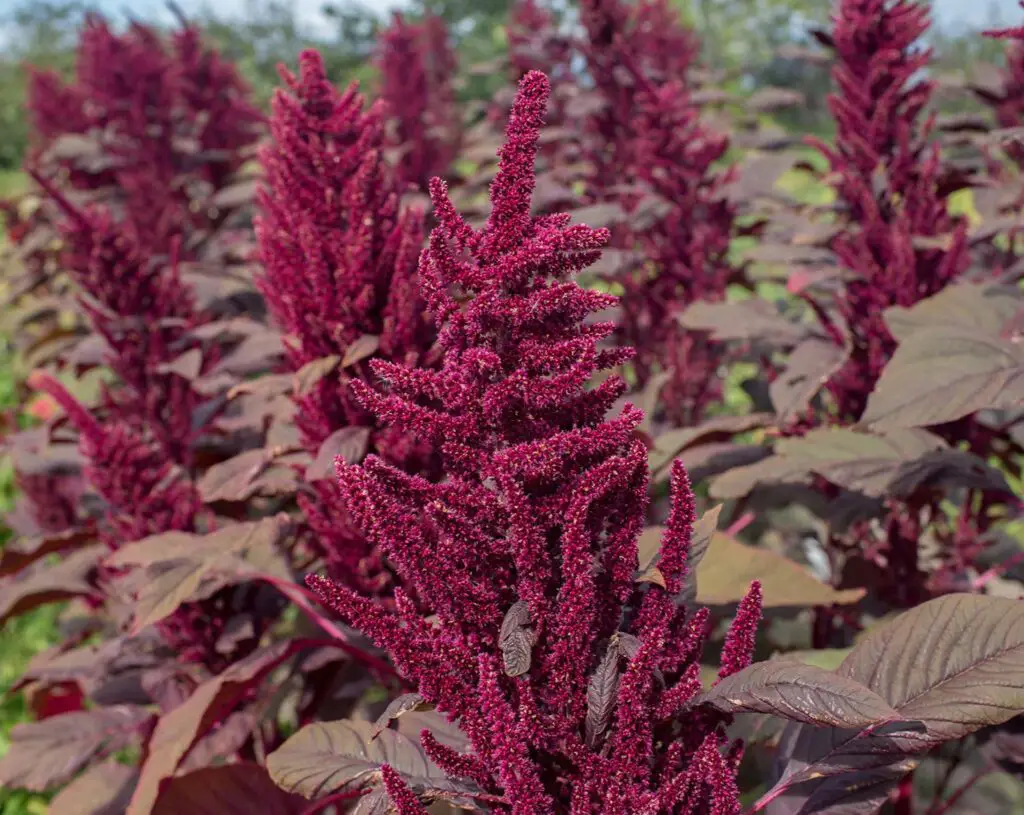
Last updated on May 20th, 2023 at 03:38 pm
The amaranth makes for a striking presence in any garden and is a familiar sight in parks around the world. The flower, with its bright red or purple color and unique tassel-like shape, is a preferred choice of florists to make a bouquet more appealing.
Amaranth’s scientific name is Amaranthus, and the genus of plants consists of more than 70 species. It is referred to as a cosmopolitan genus and is part of the Caryophyllales order.
It belongs to the Amaranthaceae family, which includes a variety of species, such as ornamental plants, herbs, and crops. The amaranth family also includes weeds called pigweed and redroot.
Amaranth is Greek in origin, stemming from “amarantos,” which means unfading or undecaying. Poets in classical times often used the word to refer to a mythological flower that never withered.
This flower is native to North, and Central America, especially Mexico, but is now found on all continents except Antarctica. The plant is perennial and grows readily in warm climates in tropical and subtropical regions across the world.
What does the Amaranth flower symbolize?
This flower symbolizes immortality and eternal love. It retains its vivid crimson hue and firm, velvety texture even when dried, sometimes for years.
It can grow in almost all types of soils and weather, and the amaranth flower is tough and survives in hostile conditions.
John Milton mentioned amaranth as undying in his epic Paradise Lost, referring to its long-lasting color and as shading the fountain of life with its blooms.
The flower is also mentioned in Aesop’s fables to contrast the fleeting beauty of a rose and the everlasting one of amaranth.
All in all, the amaranth flowers symbolic meanings are:
- immortality
- endless love
- eternal affection
- good luck
- prosperity
Meaning of the Amaranth flower colors
Red color

The most popular and universal flower in the genus is Amaranthus caudatus. It is also known as love-lies-bleeding, pendant amaranth, or tassel flower.
It is an ornamental plant instantly recognizable with its long, drooping red flower clusters. The flower has a subtle, earthy, and fruity fragrance.
Love-lies-bleeding is often used in landscaping and private gardens for a colorful floral impact, such as a mass of hanging plants on walls.
This flower symbolized hopeless or intense and genuine love in Victorian times.
Purple color

Amaranthus cruentus or purple amaranth flowers are usually thicker and stand upright, unlike love-lies-bleeding. The purple amaranth is a tall plant with late-blooming pinkish-purple flower clusters.
It is also known as Mexican grain amaranth and is one of three kinds cultivated for its seeds. It stood for endurance and strength in Mexico during pre-Columbian times.
This plant can reach up to 2.5 meters (8.2 feet), but most garden varieties are about 1 meter (3.28 feet) tall. The leaves are light green, 3-4 inches (ca. 10 cm) long, and oval.
Burgundy color

Amaranthus hypochondriacus, better known as Prince-of-Wales feather or prince’s feather, is another well-known kind featuring dark burgundy flowers. These flowers symbolize vitality and bloom in midsummer till the onset of winter.
The size of the flowers can range from a few inches long to more than 1 foot in length. Amaranth flowers are radially symmetric and made up of 3 to 5 tepals.
Interesting facts about the Amaranth flower
- Amaranth produces purple, red, or golden flowers shaped like miniature grain-like buds.
- Amaranth belongs to a group of self-pollinating plants. It blooms during the summer and autumn.
- Clusters of densely packed flowers of amaranth transform into large, heavy seed heads. A single plant can produce 60.000 seeds per year.
- The seeds are often ground, and you can use the flour as a thickener in porridge, soups, and stews. These seeds are also used in bread and cakes and to make candies. The seeds are nutty in taste, while the leaves have a spinach-like flavor.
- Foods containing amaranth seeds or flour are quite nutritious and ideal for consumption by all except people with kidney ailments.
How to grow Amaranth flowers
Amaranth can withstand drought, is resistant to insects and diseases, produces large quantities of seed, and thrives under all conditions.
- You can directly plant the seeds in the garden, preferably early in summer. The plant can also be grown indoors in pots and is favored by interior decorators to add a touch of greenery and color to any room.
- Amaranth grows well in average or poor soil without requiring any fertilizer.
- It needs watering only once a week, even in summer.
How to care for Amaranth flowers
- After planting, keep watered during dry periods for the first few weeks until established.
- Once established, water only during dry weather. Direct-sown plants need only an occasional thorough watering if the weather is dry.
- Tall-growing varieties may need staking or support.
Best time to gift Amaranth flowers
With its brilliant and enduring red color, the amaranth flower is an ideal gift for lovers to convey to each other the long-lasting nature of their relationship.
You can gift it to your partner with whom you have been together for several years and to newly-married couples, wishing them several years of holy matrimony.
The purple amaranth is considered a herald of good fortune and can be gifted to someone you want to wish luck in life.
A bouquet of amaranth flowers can be given generally to anybody to whom you want to express feelings of admiration, friendship, and affection.
Amaranth can be used in any floral arrangement and is a good fit for all happy events. It can sometimes be a part of sad occasions and is used in making wreaths. This flower can be included in bouquets, crowns, tiaras, and garlands.
Conclusion
Beautiful, versatile, and true to its name, everlasting, the amaranth flowers have been around for centuries and will continue to be popular for many upcoming years.
This flower is a delight in any flower decoration and has undeniable nutritional value and essential uses.
If you want to know and learn more about flowers, we at PansyMaiden can help you. Check out our fun, easy-to-read, and informative flower-related content that you will surely enjoy!

